You don’t see it so much these days, but comparing small cars to big ones was in vogue for a while in the car industry. In both ads and brochures you’d frequently see a tiny car squeezed between much bigger ones, implying not just how much easier it was to park than the cars surrounding it, but how the car in question was their equal, possessing big-car qualities without the price tag.
It’s a trope that hasn’t been used for a while, as far as we’ve seen. Perhaps it lost its appeal once small cars simply adopted big-car dimensions, and more recently with electric power, big-car price tags too. At that point you’re simply selling a big car.

The Rover 100 was not a big car, and it leans into the theme perfectly in this 1994 advertisement. That was the year Metro became 100, adopting some of the styling features of newer models like the R3 generation Rover 200 and the Honda-based 400, and taking on their naming scheme too.
A new name wasn’t enough to trick Alan Partridge, but Rover did genuinely work hard to improve what was, despite being a fundamentally pretty decent car, an ageing platform. Things didn’t change much under the skin, with the K-series petrol engines still present alongside a 1.5-litre PSA-sourced diesel, and Rover didn’t need to fiddle with the suspension, as the Metro was already one of the best-handling superminis.
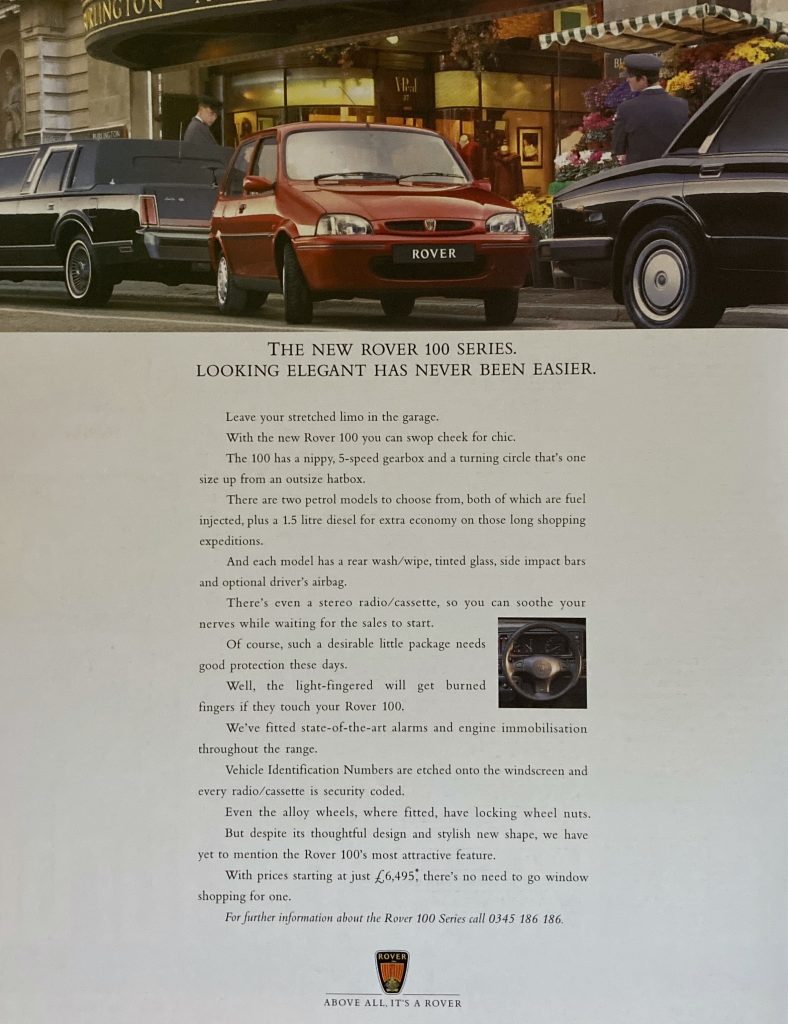
As the ad notes, all models got alarms and immobilisers, and a driver’s airbag became optionally available too, though Rover enthusiasts will be all too aware how little that helped when the Metro was eventually tested by Euro NCAP. That hinted that the car was ultimately out of its depth as the 1990s bore newer, fresher rivals.
Autocar’s 1994 road test of the 100 hinted as much. Despite praise for its handling, performance, and build quality, the Rover was by now lagging well behind newer rivals like 1993’s Fiat Punto in terms of passenger space, 1994’s new Volkswagen Polo for ride quality, and (while this is obviously subjective), several rivals in terms of styling. The 100 scored just two stars out of five.
So the 100 did trip up on the space and ride quality elements of that big-car comparison, but there are still advantages to being genuinely small. Parking, for one, and enjoying the car’s nimble handling another. And today, when superminis are more like small family cars (the aforementioned Rover 200, at the smaller end of the Escort class in its day, is shorter than a modern Vauxhall Corsa), there’s novelty in a car so bijou.
If there’s one thing that’s changed, it’s the price. Metros and 100s have grown in popularity in recent years, and it’s not unusual to see the tidiest cars now priced higher than you might pay for a contemporary Rover 800…




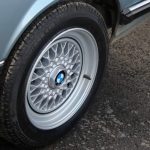
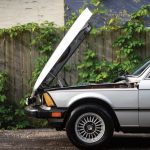


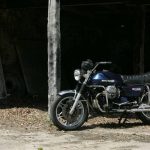
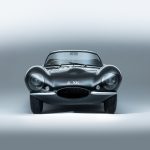
My parents (mother) had a series of Renault 5s. I hired a Mini Metro to see if it was better. It was worse!
My mother did get a Metro MG with red piping. Some very nice touches.
In my opinion the Renault 5 was a very good car. She then had the legendary Honda Civic with Aerodeck saying. The Accord estate was called an Aerodeck.
Double wish bone suspension produced a very low bonnet line, (safe for pedestrians).
Very streamlined.
Reliable automatic!
HONDA!